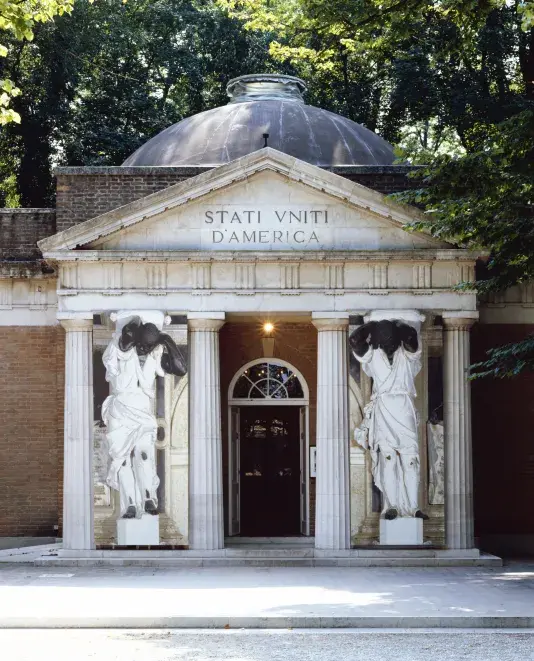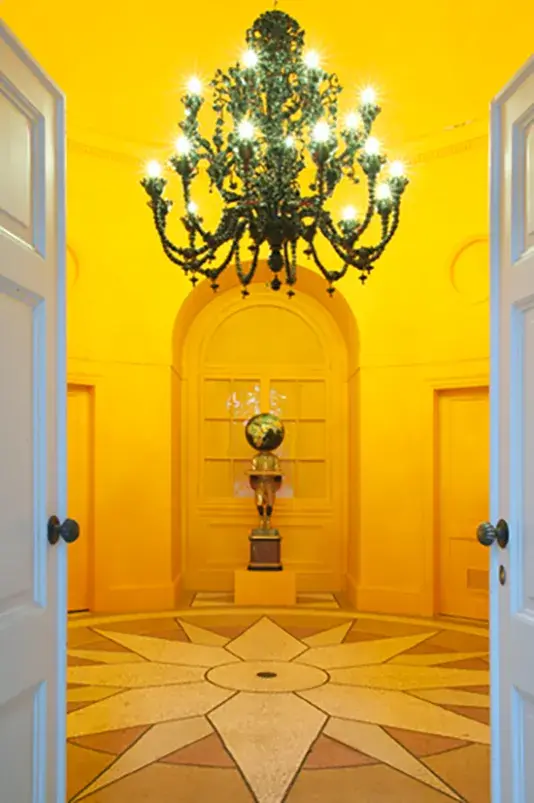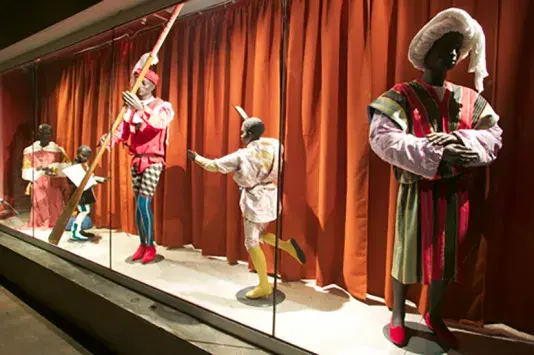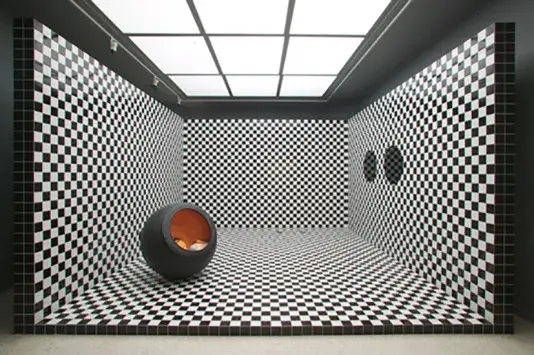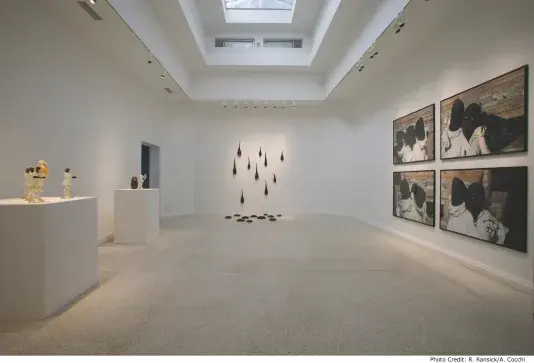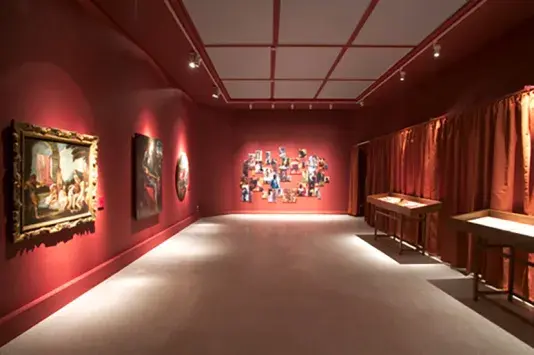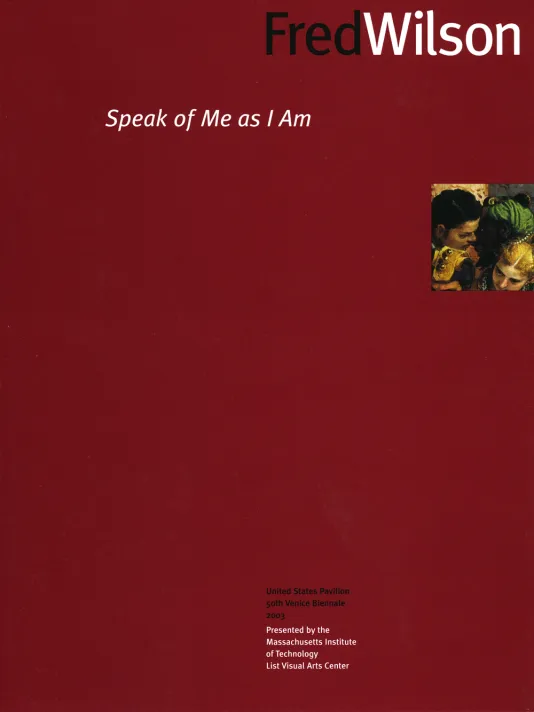Installation view of Fred Wilson’s Speak of Me as I Am, 2003. The U.S. Pavilion at the 50th International Art Exhibitions - la Biennale di Venezia; commissioned by the MIT List Visual Arts Center
Speak of Me As I Am
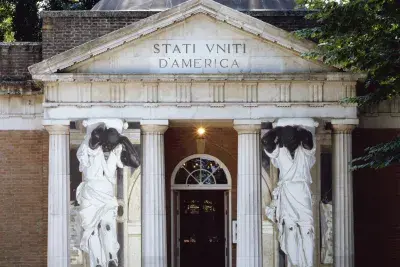
Commissioned by MIT List Visual Arts Center, Fred Wilson’s Speak of Me as I Am transforms the United States Pavilion at the 50th Venice Biennale into a meditation on race, representation, and history, reframing the city’s Renaissance past through the lens of the African diaspora.
Known for questioning the embedded notions of “truth” in museum displays, Wilson established himself as a key figure of institutional critique through installations that juxtapose historical artifacts, art objects, film, video, audio, and text. Speak of Me as I Am addresses Renaissance Venice and the role Black Africans (referred to in historical sources as “Moors”) played in what was then the most cosmopolitan and ethnically diverse city in the world. As early as the twelfth century, the presence of Black Africans permeated Venetian art, architecture, and culture. Wilson revisits this kaleidoscopic history, asking who these individuals were, what their lives were like, and how they have been remembered—or forgotten—by art history.
Wilson addressed these issues through a complex installation wherein museological displays meet sculpture, video, and sound works. The installation begins on the Pavilion’s facade, where two colossal sculptures of Black figures in Renaissance garb have been installed alongside the neoclassical columns flanking the doorway. Their backs are hunched as they appear to hold up the building’s entablature. Upon entry, a large black glass chandelier (crafted at a glass factory on the island of Murano) crowns the rotunda of the Pavilion, leading to a network of objects that locate Black Venice in art, myth, and history. In one section of this carefully staged installation, life-size mannequins dressed in elaborate period costumes evoke the dress of African people depicted in 16th-century Venetian paintings, pointing to a central tension in Wilson’s exhibition between presence and absence. Elsewhere, lustrous black glass teardrops—some with added glass eyes—appear to drip out of the wall.
The most complex room of the exhibition, Turbulence II, anchors the Pavilion’s final gallery. A large black ceramic jar with miscellaneous bedside objects punctuates a room enveloped in black-and-white tiling. Unframed black circular mirrors are hung up, while messages of confinement and freedom have been handwritten in the grout. Made possible by Eyebeam, Moving Images Division, the video installation September Dream (2003) is placed across the room, projecting sound throughout the space. Wilson constructed the piece by editing together murder and suicide scenes from four different film and opera productions of Shakespeare’s Othello, in which the role of “the Moor” is played by white actors. He then plays them backward, enacting a fantasy of undoing violence by reversing time.
Wilson’s installation is timely, given growing xenophobia in the West, and stricter immigration policies in both the United States and Europe. Making the case that what we think of as Western culture is, in fact, the result of historical multiculturalism, Wilson asserts that Venice, as a vital trading hub, has always been a place where human difference and diversity contributed to the thriving culture of global citizens.
Speak of Me as I Am was commissioned by MIT List Visual Arts Center Curator Kathleen Goncharov.
Fred Wilson (b. 1954, Bronx, NY, USA) is a conceptual artist whose work investigates museological, cultural, and historical issues largely overlooked or neglected by museums and cultural institutions. Since his groundbreaking exhibition, Mining the Museum (1992), at the Maryland Historical Society, Wilson’s work has been the subject of more than forty solo exhibitions around the globe. His work has been exhibited extensively in museums including the Museum of Modern Art, New York; the Museum of Contemporary Art, Chicago; the Allen Memorial Art Museum, Oberlin College, Ohio; the Cleveland Museum of Art, Ohio; the Institute of Jamaica, Kingston; the Museum of World Cultures, Gothenburg, Sweden; the Hood Museum of Art, Dartmouth College, New Hampshire; the British Museum, London; and the Ian Potter Museum of Art, University of Melbourne, Australia. His work can be found in several public collections, including the Museum of Modern Art, New York; the Whitney Museum of American Art, New York; the San Francisco Museum of Modern Art; the Long Museum, Shanghai; the Tate Modern, London; and the National Gallery of Victoria, Melbourne, Australia. Wilson presented his exhibition, Afro Kismet, at the 2017 Istanbul Biennial in Turkey, which traveled to London, New York, and Los Angeles. Since 2008, Wilson has been a member of the Board of Trustees at the Whitney Museum of American Art. He represented the US at the Cairo Biennial (1992), as well as the Venice Biennale (2003). His many accolades include the prestigious MacArthur Foundation’s “Genius” Grant (1999), the Skowhegan Medal for Sculpture (2006), the Ford Foundation’s Art of Change Fellowship (2018), and Brandeis University’s Creative Arts Award (2019). Most recently, Wilson was commissioned, among five other artists, to create two large-scale sculptures for the Delta wing of New York’s LaGuardia airport.
